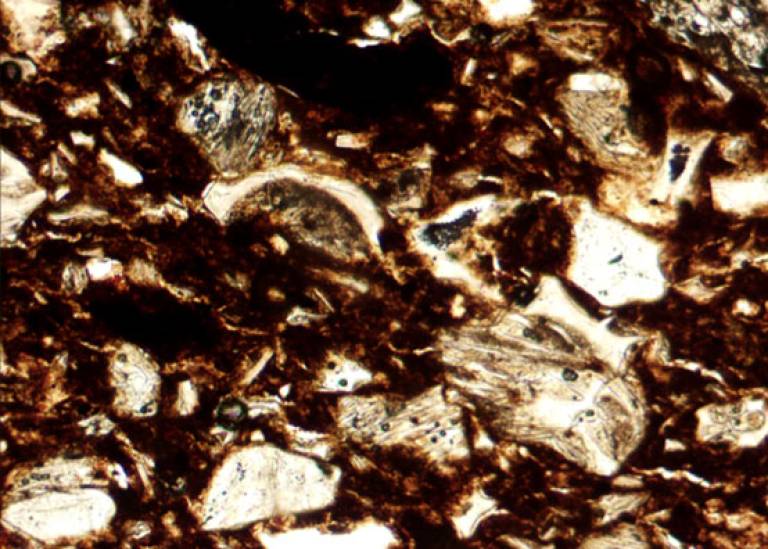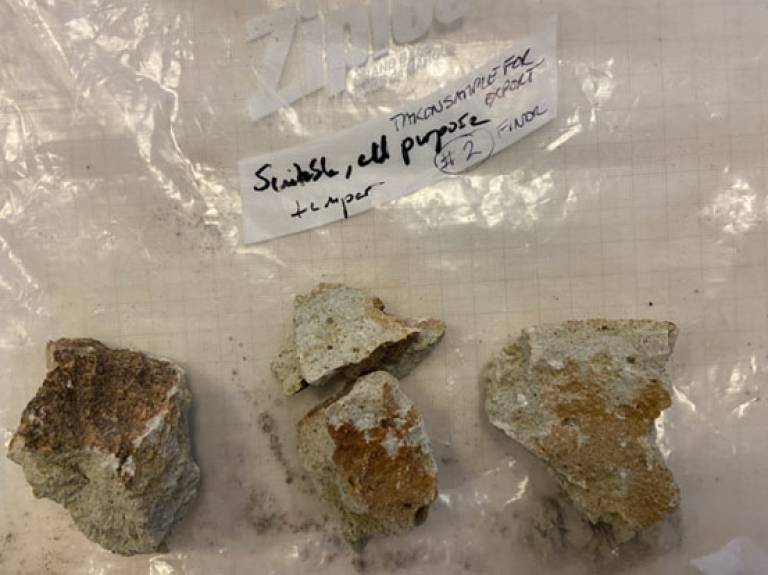Fieldwork Diary: Selina Han (Ethiopia, 2022-23)
15 March 2023
In the first in a new series of fieldwork diaries, Selina Han (3rd year undergraduate student, UCL Institute of Archaeology) shares her experience of conducting fieldwork in Ethiopia.
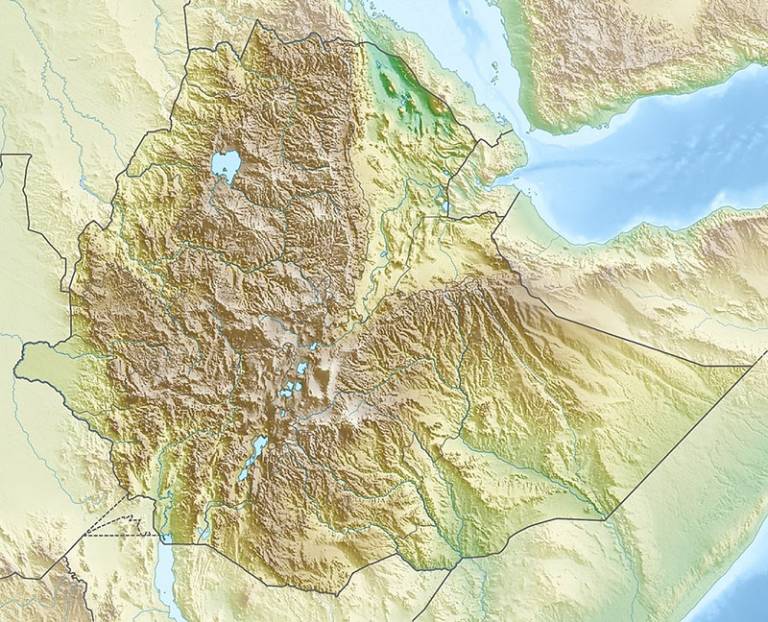
“You say their stories, it is gift they give you.”
- Khaled Hosseini, <And the Mountains Echoed>
Sunrise over Addis Ababa from the plane window
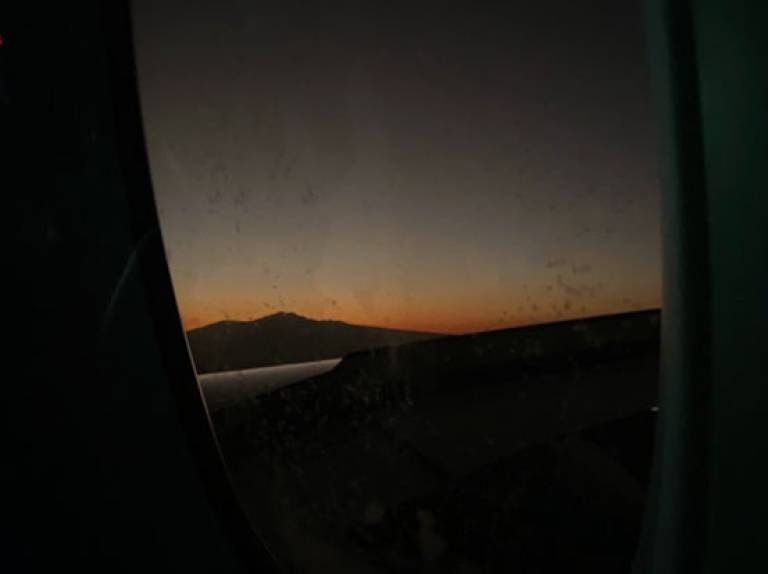
"As part of my final year undergraduate dissertation on ‘Ceramic Composition and Dynastic Change in the Lalibella Region of Medieval Ethiopia’, supervised by Patrick Quinn of the UCL Institute of Archaeology (IoA) and Tania Tribe of SOAS, University of London; I recently conducted fieldwork in Ethiopia. The purpose of the trip was to visit the sites from which my study materials come from, as well as to collect comparative clay samples. It was a wonderful experience which will greatly benefit my on-going project. This is a fieldwork diary of my trip.
Landscape of Addis Ababa
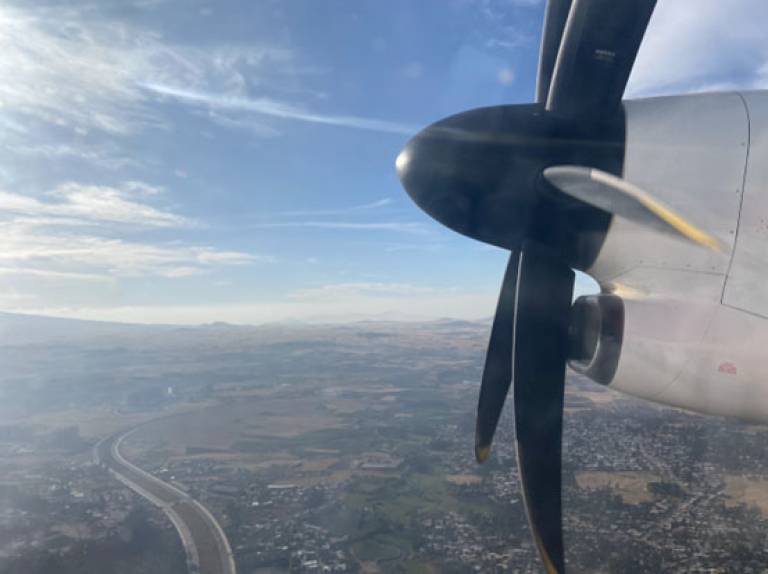
After flying all night from Heathrow airport, the plane landed in Addis Ababa as the the sun had begun to rise. A torch of warm orange-red slowly extended behind the hazy string of mountains. I had travelled out with Tania Tribe and Jackie Phillips of University of Cambridge, who are both part of the ‘Solomonic-Zagwe Encounters Project’ or ‘SolZag’, which my research contributes to. They asked me about my first impressions of Ethiopia, but I was very tired and overwhelmed and my mind had gone blank. In retrospect, my first impression was a grand and peaceful land, full of vitality, as if was embracing me and wrapping me up with warmth and hope.
Landscape of Lalibela
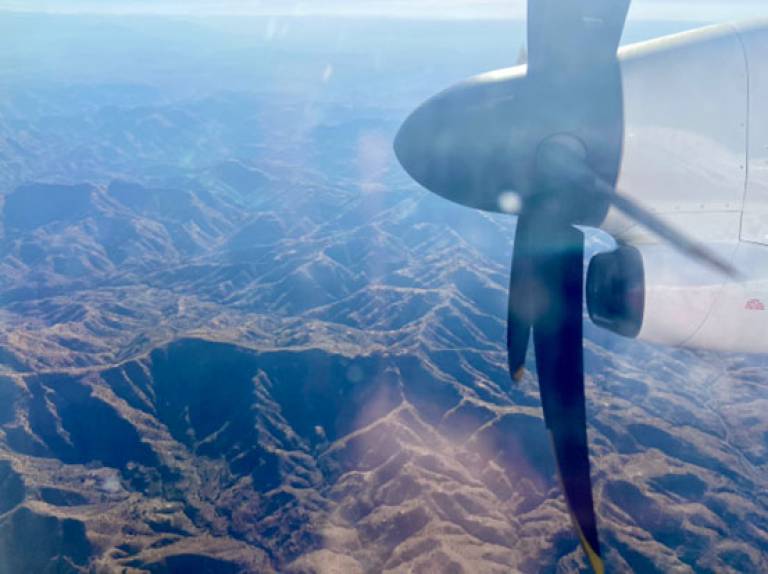
We took a smaller plane from Addis to Lalibella, flying above a wide plain covered with small clustered settlements, which gradually gave way to rugged mountains with high ridges and deep valleys. I could not take my eyes off the landscape, which reminded me of the surface of a giant pottery sherd, slowly moving under the microscope, with the valleys representing the voids and the peaks between the inclusions.
Bete Giyorgis
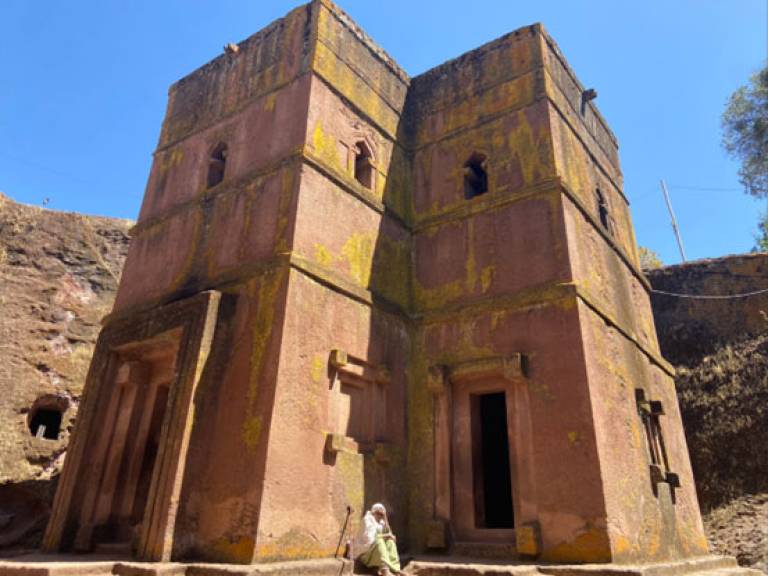
Lalibella is famed for its rock-hewn churches; monolithic subterranean sites of worship cut deep into the volcanic landscape. According to the legend, king Lalibella wanted to build Ethiopia’s own Jerusalem on his land. I had seen pictures of some of the churches, but they were even more impressive up close. Their solid walls contrasted with the ragged cliffs and both absorbed the hot sun, as well as casting long deep shadows. Pigeons often perch on ledges on the rock walls, staring casually at the passing crowd. There was a ceremony taking place and we watched in silence from a grotto in the rock wall, while monks gently chanted. It was a peaceful and serene scene and I suddenly felt a very long way from UCL and rainy London.
Religious ceremony in progress
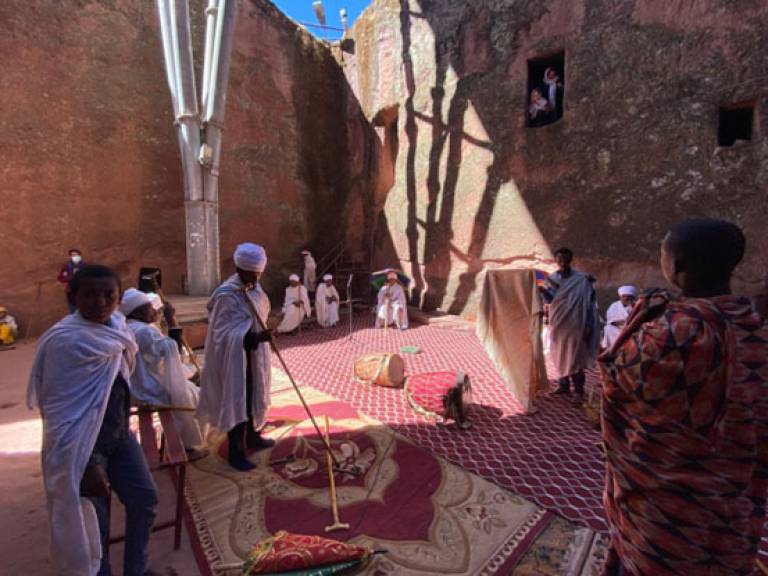
Visiting the churches and getting to know the landscape was very useful for me to contextualise my research. I am examining the composition of the Medieval ceramics from four sites and linking this to the landscape to determine where they could have been made and if the same or different pottery was used at each site. I saw the on-going SolZag excavations from which I am studying sherds from different levels.
Ethiopia has a long history of pottery making. Most vessels appear to have been relatively simple containers for cooking or storage. There is a useful exhibition at the Lalibela Cultural Center with reconstructed vessels. My dissertation material consists of very small sherds, so it was useful to see whole pots. All ceramics in the area were hand made and with little decoration, but they have a rugged beauty like the volcanic landscape and the rock-hewn churches. My research aims to look beyond their homogeneous typology to the raw materials that they are made of and the technology that was used in the preparation of the paste. These can provide alternative criteria to classify the Medieval ceramics and detect patterning that reflects human activity and cultural change, such as the transition from the Zagwe dynasty to the Solomonic dynasty.
Traditional ceramics at the Lalibela Cultural Center including a display on coffee making
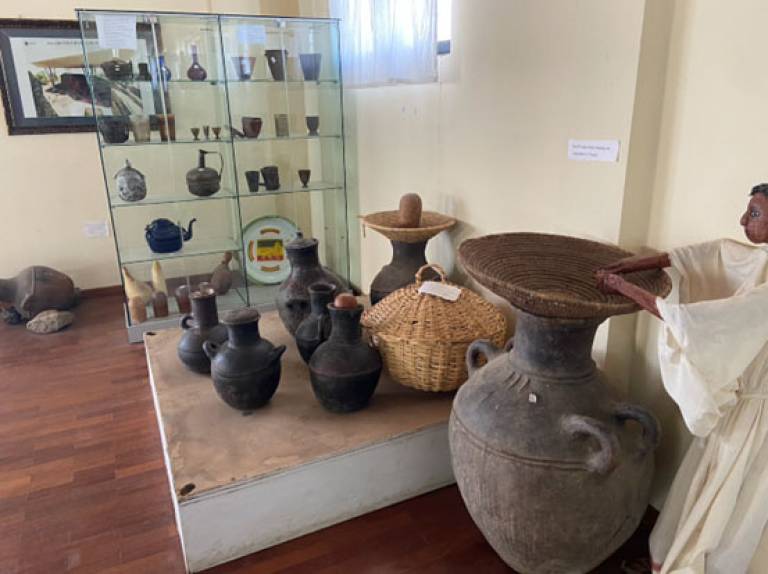
We spent several days re-organising the previously excavated pottery sherds and selecting more for scientific analysis. We also collected volcanic rock samples, which can be compared to the inclusions in the ceramics under the microscope and provide information about the raw materials, origins and technology of the sherds of Lalibella.
Learning to make coffee
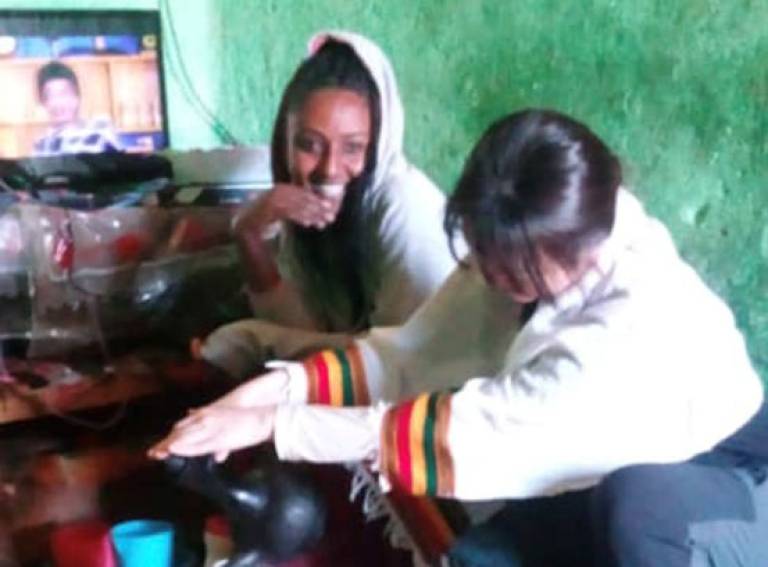
No trip to Ethiopia would be complete without trying the coffee! I was shown how to make it in a traditional way and even had a go myself. I also learned some Amharic words, traditional Ethiopian dances and shared injera, a pancake-like flat bread with my hosts. When communicating with the local community living near one of the churches, I was touched, by their tolerance and understanding of the archaeological investigations taking place at these most sacred of places. Despite the language and cultural barriers I found them to be warm, open and welcoming.
Before my trip to Ethiopia, though I was enthusiastic about the topic of my dissertation, I felt rather detached from the study material and context, so many miles away in a foreign country. I came back energised and even more excited about the research and its wider impact. I now feel better connected to Ethiopia, its pottery, landscape, churches and culture. Though I already miss the rich history and culture of the place, I carried a warm feeling with me back to the IoA. This will motivate me during the rest of my data collection and my write up. I hope to continue to work on ceramics from Ethiopia after my degree and to return to Lalibella, as it made such an impression on me."
May God give you health
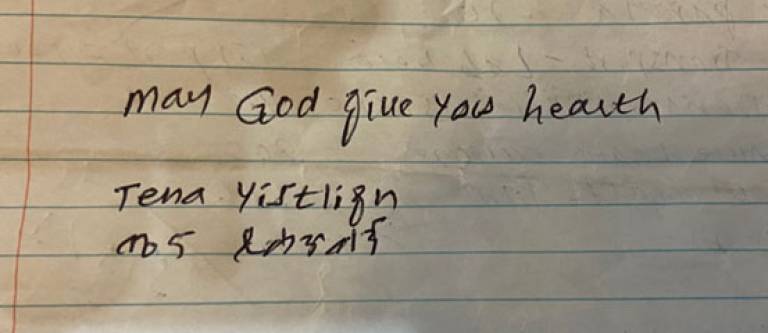
ጤና ይስጥጠን!
Links
Map: Ethiopia_relief_location_map (Carport, CC BY-SA 3.0 <https://creativecommons.org/licenses/by-sa/3.0>, via Wikimedia Commons)
Images: All images courtesy of Selina Han
 Close
Close


